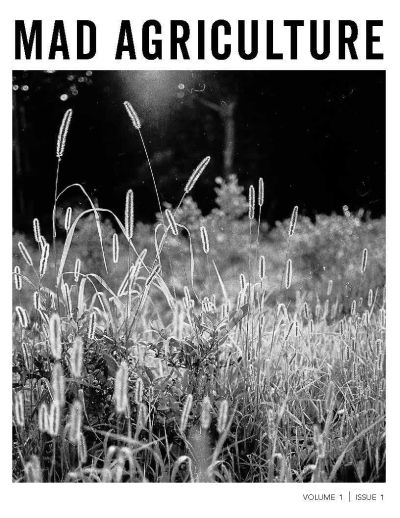
The Mad Agriculture Journal
Edge Effect
Published on
June 01, 2019
Written by
Clark Harshbarger
Photo by
Jordan Perkins
In ecology, there is a concept called the edge effect. It happens on both a macro and micro level, and physically and metaphysically in our conscience. The edge effect is a phenomenon where, at the boundaries of two connected yet different places, the highest frequency of diversity, resilience, and permanence takes place. The edge effect is an area where transition, succession and balance occur right before our eyes. The edge effect gives us an opportunity to observe as we walk through doors on landscape breaks or soil boundaries on a map, a place within a place. The edge effect is a principle in ecology that states: at the edges of biomes, landscape breaks and ecological habitat transitions, diversity is at its height. At the edge of two overlapping ecosystems, you can find species from both of the ecosystems, as well as unique species that aren’t found in either ecosystem but are specially adapted to the conditions of the transition zone between the two edges. It is a concept derived from observing a natural phenomenon that occurs across the globe. To put it simply, where two things come together, something that wasn’t possible alone, is now possible.
In agricultural practice, we can mimic this ecological principle when designing large or small-scale farming systems. Planting a diverse cover crop that serves as a biological safe zone, insect pollinator habitat, wind break, snow catchment or even wildlife habitat is one practice that can be used to mimic the edge effect. One example of this is when producers plant the dryland corners of their irrigated circle pivots into a cover crop. Another example is to strip crop, alternating the crop to be harvested with a cover crop, which is not harvested. This can be used in between one’s garden rows at home too. I have also seen a field of cover crops that were strip cropped with pollinator specific species in strips! Now that is radical. Cover crop cocktails are not recipes. Cover crops should be used as an intention. Webster’s third definition of intention states: the object for which a prayer is offered and Webster states that a cocktail is: a mixture of agents usually in solution that is taken or used especially for medical treatment or diagnosis. This can be taken quite literally when determining which cover crop species to select in increasing the overall health of your ecosystem, and even more specifically, your soil’s ecosystem. A bare soil is “naked, hungry, thirsty and running a fever” (Archuleta, SH LLC).
Transition zones and transformative events have something in common. They define what a person or a place truly is and give it its unique pattern between wet and dry, forest and grassland, sky and mountain, plant root and soil. You are the person who you were as a child. You may change in physical appearance or spiritual growth, but you are that person. A given place is also still the same place once management has degraded it and it can again be reborn unto itself or true expression of wholeness with the right understanding and care. Ultimately, it is within our ability to listen to nature and let it be what it wants, what it needs to be.
The last thing I would like to say about the edge effect is that this phenomenon can also be taken to heart metaphysically in one’s choices in life. We often hear the cliché “living on the edge.” In a former life, I used to map soils in remote areas of the country. Often, we were asked (paid) to go to the edges of our comfort zone, by pushing field work to the edge of the twilight between day and night (in Montana we called this magic time “bear-thirty”). The edge was found venturing out in early spring, on the days that were still held onto by winters tight grip. We would drive to the edge of our ability, up steep roads or high marks on a ridge with our ATV’s. We would push ourselves physically to dig another three inches, testing the edge of our strength and endurance and curiosity.
Have you ever been to the edge but not jumped? What is the feeling of the unknown? How does one come to know when it is time to make a change in your life? Dare to live outside your comfort zone, push yourself to farm in ways you never dared, and be radical in your experiences seeking the edge effect in your life.
